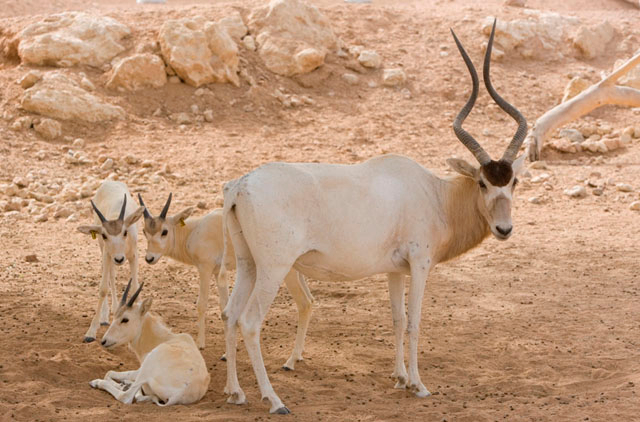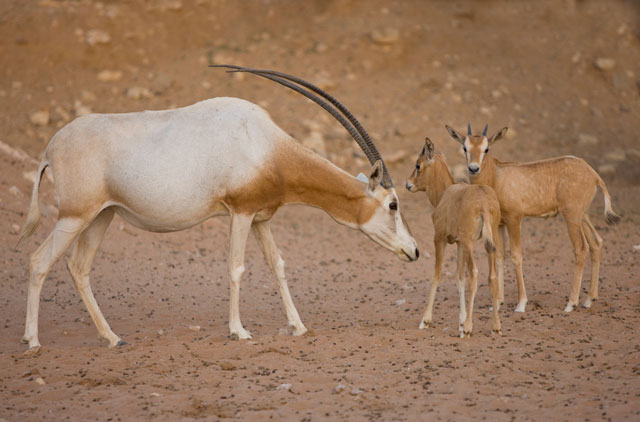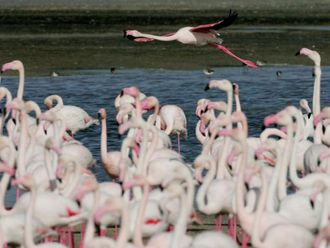
Al Ain: The year 2010 saw a record number of desert antelopes born at the Al Ain Wildlife Park & Resort (AWPR).
The highly-threatened group of animals are a key part of conservation work and a number of conservation research initiatives are moving ahead in AWPR.
The year 2010 marked one of AWPR's best recorded year for antelope births, with a record number of young antelope raised, including 16 Scimitar-horned oryx, 27 Arabian oryx, 10 Beisa oryx, four Addax, three Chad dama gazelles, six Mhorr dama gazelles and six Speke's gazelles.
The Scimitar-horned oryx and Mhorr gazelle are extinct in the wild and only survive in captivity, making AWPR's herds extraordinarily valuable. The Addax survives with fewer than 300 individuals in the wild.
The Beisa oryx, native to the dry lands of North East Africa, is declining rapidly, already extinct in Eritrea and Uganda and with populations rapidly declining in Kenya.
The Arabian oryx at AWPR are being utilised by the Environment Agency – Abu Dhabi (EAD) for their regional oryx conservation projects, with animals from AWPR being used for reintroduction in the UAE and Jordan.
AWPR veterinarians work with EAD to support the management of reintroduced animals and have recently worked with herds in UAE, Jordan and Syria.
The desert antelopes are threatened with extinction by a history of uncontrolled hunting, continued overgrazing of their arid habitats, disease and now climate change.
Working with the Royal Zoological Society of Scotland (Edinburgh Zoo), AWPR is undertaking a genetic analysis of its antelope herds to assess their relationships to other zoo populations and to identify strategies for their long-term genetic management.
Similarly, working with San Diego Zoological Society, AWPR is developing demographic strategies for the long-term management of these valuable herds in both San Diego and at AWPR.














